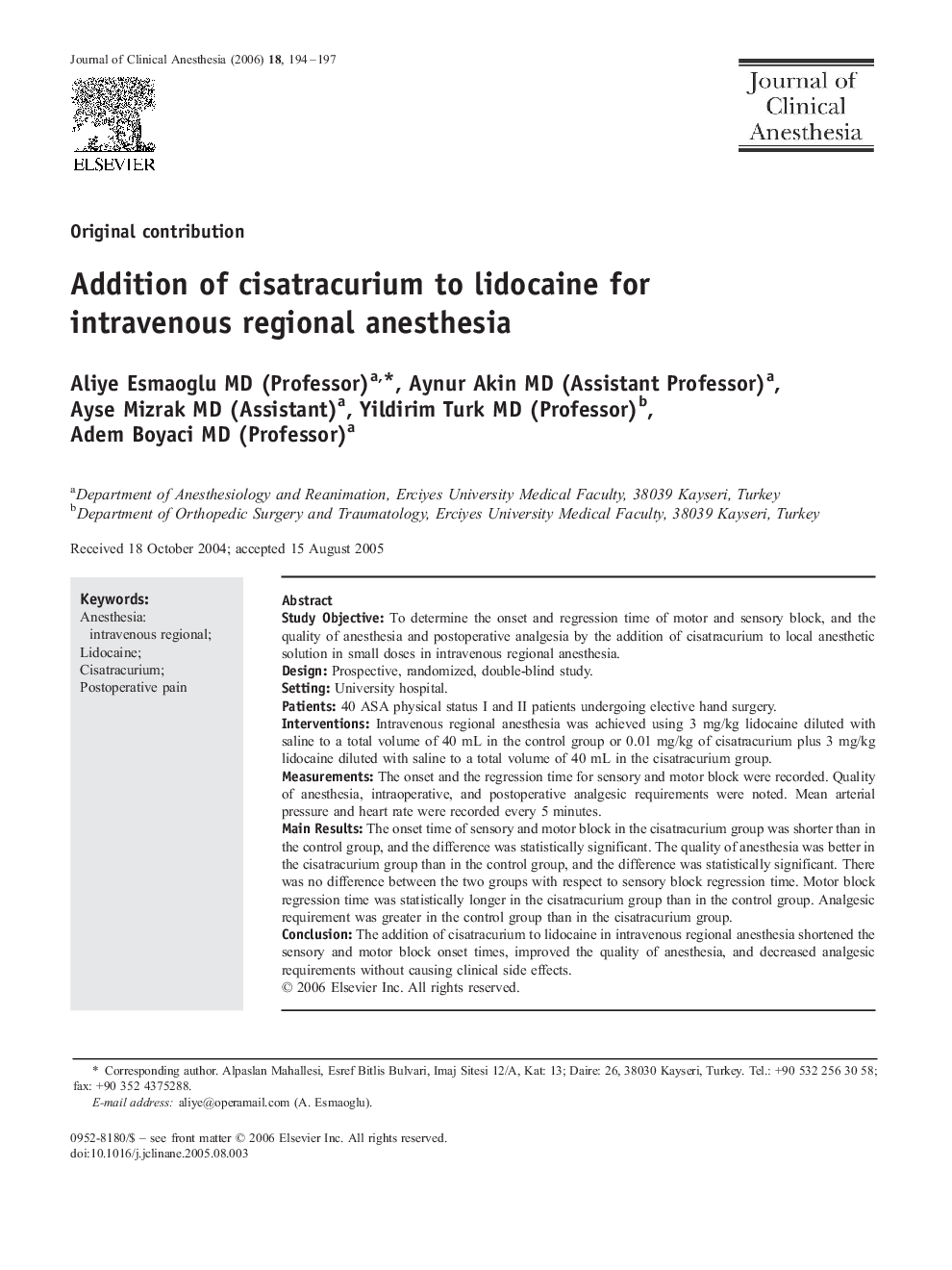| Article ID | Journal | Published Year | Pages | File Type |
|---|---|---|---|---|
| 2764269 | Journal of Clinical Anesthesia | 2006 | 4 Pages |
Study ObjectiveTo determine the onset and regression time of motor and sensory block, and the quality of anesthesia and postoperative analgesia by the addition of cisatracurium to local anesthetic solution in small doses in intravenous regional anesthesia.DesignProspective, randomized, double-blind study.SettingUniversity hospital.Patients40 ASA physical status I and II patients undergoing elective hand surgery.InterventionsIntravenous regional anesthesia was achieved using 3 mg/kg lidocaine diluted with saline to a total volume of 40 mL in the control group or 0.01 mg/kg of cisatracurium plus 3 mg/kg lidocaine diluted with saline to a total volume of 40 mL in the cisatracurium group.MeasurementsThe onset and the regression time for sensory and motor block were recorded. Quality of anesthesia, intraoperative, and postoperative analgesic requirements were noted. Mean arterial pressure and heart rate were recorded every 5 minutes.Main ResultsThe onset time of sensory and motor block in the cisatracurium group was shorter than in the control group, and the difference was statistically significant. The quality of anesthesia was better in the cisatracurium group than in the control group, and the difference was statistically significant. There was no difference between the two groups with respect to sensory block regression time. Motor block regression time was statistically longer in the cisatracurium group than in the control group. Analgesic requirement was greater in the control group than in the cisatracurium group.ConclusionThe addition of cisatracurium to lidocaine in intravenous regional anesthesia shortened the sensory and motor block onset times, improved the quality of anesthesia, and decreased analgesic requirements without causing clinical side effects.
